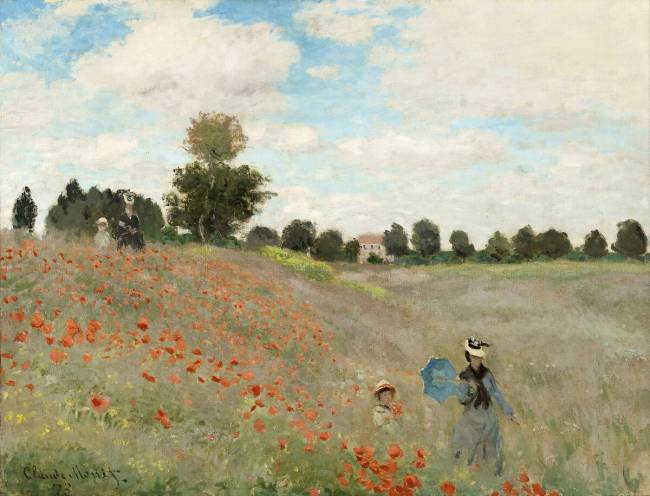Shop art print and framed art Poppy Field at Argenteuil by Claude Monet
Customise
Your art print
Poppy Field at Argenteuil OF Claude Monet
Poppy Field at Argenteuil
Genesis of Poppies, an emblematic work by Claude Monet
Les Coquelicots, a painting completed in 1873, is one of the most famous works by Claude Monet, a leading figure of the Impressionist movement. Painted in Argenteuil, where Monet moved in 1871, the picture demonstrates his interest in the representation of nature in the open air characteristic of Impressionism. This period was marked by a desire to capture the ephemeral, the fleeting sensation, in opposition to the academicism then dominant. The painting belonged to several private collectors, including the art critic Paul Durand-Ruel, before being bequeathed to the French state in 1906 by Étienne Moreau-Nélaton. It is currently on display at the Musée d'Orsay in Paris.
Les Coquelicots by Claude Monet: A hymn to nature and light
Les Coquelicots is an oil on canvas in grape format (50 x 65 cm), a format favoured by the Impressionists for its manageability outdoors. The painting is striking for its bold composition and vibrant palette. Monet plays with colour contrasts, contrasting the bright red of the poppies with the soft green of the grass and the luminous blue of the sky. The brushstrokes are quick and visible, conveying the immediacy of the scene. Perspective is flattened, the emphasis being on the effects of light and atmosphere. Contours are blurred, shapes dissolve in the light, creating an impression of movement and life.
Les Coquelicots by Claude Monet: A simple subject, unexpected depth
The painting depicts a summer walk through a field of poppies. In the foreground, a woman and a child are walking along the flower-filled hillside. The woman, probably Monet's wife Camille, and her son Jean are strolling leisurely, while in the background, in front of the row of trees, another duo similar to the first seem to be following in their footsteps. The scene is simple, almost banal, but Monet manages to imbue it with intense poetry and emotion. The painting is an ode to the beauty of nature, the sweetness of life and the joy of the present moment.
Impact and legacy of Claude Monet's Coquelicots
Les Coquelicots marked a turning point in Monet's career. Presented at the first Impressionist exhibition in 1874, the painting provoked contrasting reactions. Some critics were shocked by the freedom of the brushstrokes and the lack of finish, while others praised the freshness and spontaneity of the work. Today, Les Coquelicots is considered a masterpiece of Impressionism, a hymn to nature and light. The painting will thus have been a source of inspiration for many Impressionist artists, and continues to fascinate with its timeless beauty and ability to evoke universal emotions. It bears witness to Monet's innovative vision, capturing the very essence of life and nature in his canvases.
This artwork is a painting from the modern period. It belongs to the impressionism style.
« Poppy Field at Argenteuil » is kept at Musee d'Orsay, Paris, France.
Find the full description of Poppy Field at Argenteuil by Claude Monet on Wikipedia.



































